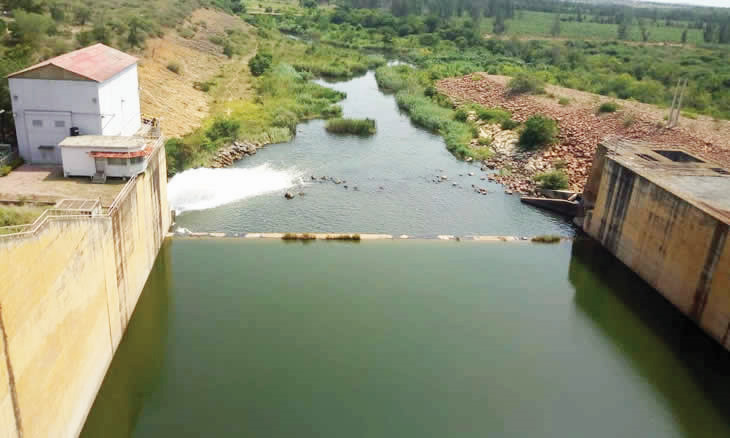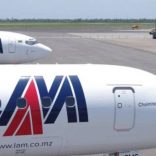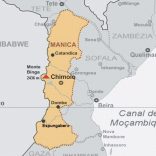Mozambique: From the bush to the best—training the trackers of tomorrow | Gorongosa National Park
Enough water for 12 months only as Pequenos Libombos faces worst drought in 30 years – Watch

Photo: TVM
The Pequenos Libombos dam has only enough water to supply Maputo, Matola and Boane for another 12 months. To address the situation, an additional 55,000 cubic meters of water from boreholes is expected to be added up until August.
For almost five years, rainfall in Mozambique has not been enough to fill the Greater Maputo region’s main reservoir. The situation is critical, with those responsible for water resources management pointing out that this is the worst drought in 30 years.
The Pequenos Libombos reservoir contains only 82 million cubic metres of water out of the 400 million it should be holding, and water restrictions will have to remain in place until at least February 2020 to ensure supplies do not dry up altogether.
“Under the current regime of restrictions we have enough water for one year, from now onwards. That is, we can hold out until the next rainy season. And we expect the next rainy season to be good so we can replenish the water that will be used for the supply,” Águas do Sul’s Regional Director-General Hélio Banze says.
One solution is to resort to the Corumana dam.
“The Incomati basin where the Corumana dam is located will very briefly be a source of water for the city of Maputo. At the beginning of the rainy season, water levels were about 380 million cubic meters, but today we are at 323 million cubic meters. The shortage will continue, but we are monitoring the hydrological situation and by March we will be able to announce the new measures,” Banze explains.
And boreholes, which have already been acting as an alternative source of supply, will be reinforced in order to stretch the available water to a little more than a year.
Pedro Paulino, director general of the Fund for Investment and Heritage of Water Supply (FIPAG), continues: “We are restructuring our infrastructure strategies because of the constraint system, and have reactivated a total of 22 systems, which are currently operating, mainly in the peripheral areas. It was also possible to supply from this source the trucks that absorbed much of the Umbeluzi water.”
But the search for alternative sources of water does not stop there. In fact, FIPAG expects to have 55,000 cubic meters available by August of this year.
“One way of increasing the water resource was studied showing we could recover a flow of about 43,000 cubic meters per day from underground sources. This programme now adds about 12,000 cubic metres from boreholes in Intaka. This measure has produced very encouraging results and we want to continue to develop infrastructure that allows the channelling of this water to distribution centres, then stabilising it as usual. Of the total of 55,000 cubic metres that we anticipate by August, 12,000 have already been made available,” Paulino said.
Data from the Regional Administration of Waters of the South indicate that consumer demand is being met only 80 percent, and farmers 15 percent.
Desalination of sea water is also being assessed, so far without any deadlines for implementation being discussed. Authorities say they are mobilising funds from partners, but until this comes to fruition, water must be managed rationally.
By Cledy Marinela












Leave a Reply
Be the First to Comment!
You must be logged in to post a comment.
You must be logged in to post a comment.